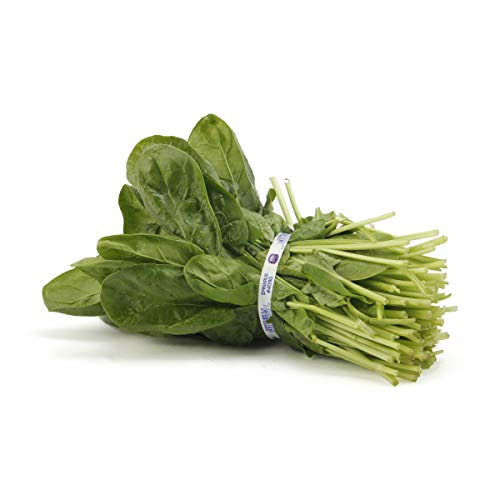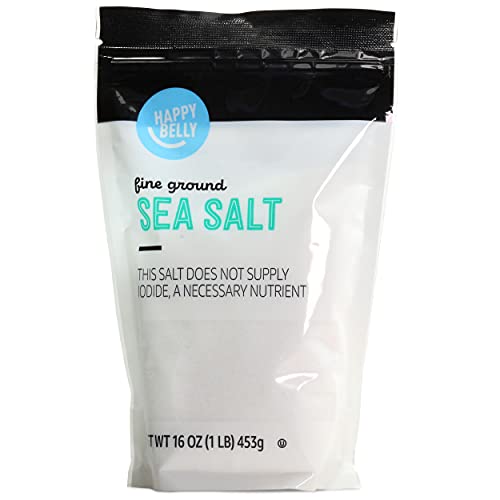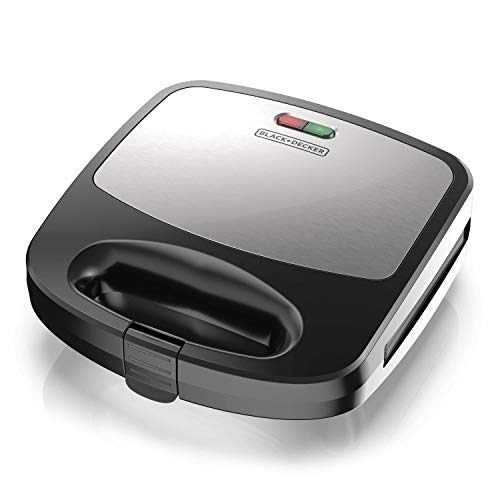

Step 1: Select the partition where you want to add a new partition to. Then right click on the partition and select “Resize/Move Partition”, which appears as the second item from the top in the drop-down menu. (If you just want to shrink the partition, don’t add a new one.)

Step 2: The “Resize/Move Partition” dialog will appear and ask if you want to add a new partition or resize the existing one. Please select “Add” from the drop-down menu to create a new partition.

Step 3: The “Create Disk Partition” dialog will appear and let you choose the size of the new partition to be created. You can click on the “Advanced” button to set a Custom value for the size of the partition in the Case 1: Set size in MB or Case 2: Specify size in GB and Bytes box, but if you want to resize the partition to be exactly 5 GB, please type “5041648”, which is 500 MB x 1024 MB (1 GB =

Step 4: When “Do you want to use the selected partition as the last partition?” appears and you check “No”, the Add Partition dialog will then pop up and tell you how much free space is left on your disk if you resize or shrink the partition. You can also set a letter for the new partition.

Step 5: When you are about to create the partition, please ensure you have checked “Perform a quick format…” before clicking “OK”.

Step 6: To check the new partition has been created, go to “Disk Management” from the lower pane and then double click to expand the disk drive. If a new partition has been created, you will then see the new partition as well.

Step 7: To format the new partition, please right click on it and select “Format” from the drop-down menu. After that, you can follow the instructions and create a label for the new partition.

Step 8: The new partition is now ready for you to use. You can also access it through My Computer and then remove the old partition from the partition list.

Step 9: To open the new partition, you can right click on the partition and choose “New Simple Volume” from the drop-down menu. Now you can follow the instructions under Step 1: Select the partition in “Step 2: The ‘Resize/Move Partition’ dialog will appear.” in this tutorial to format the newly added partition.

Step 10: Now you can choose the letter and format of the new partition you want to create. The “Create Disk Partition” dialog will appear and you can click on the “OK” button to create the partition.

How to install the Google Earth Downloader plugin in Mozilla Firefox


Step 1: Download the plugin here. Click on the Download plugin button and Firefox will prompt you to go to the next step.

Step 2: Select the Open file button. This will help you get the plugin downloaded, and saved in your desired location.

Step 3: The next page will prompt you to Open or Save the file. To add the plugin in Firefox, select the Open option.

Step 4: The file will now open. Firefox will then prompt you for an installation location for the extension. Locate the place where you want to save it and select Install Now.

Step 5: You will then be asked to restart Firefox. Once you restart, go to the location where you placed the plugin and you should find a Google Earth downloader folder with a Firefox icon.

Step 6: Click on the Firefox icon, and it will open the plugins window. Click on the Activate Plugin button to activate the plugin. Now you can select the Plugins button and then click on the Google Earth Downloader menu.

Step 7: There you’ll have to pick where you want to download the Google Earth image, and what part of the world you are interested in.

Step 8: Click on the Google Earth Downloader menu and click on the Make a KML file of the current map section.

Step 9: The tool will automatically transfer the image to your desired location. To see the newly downloaded Google Earth image, go to your Downloads folder in Windows Explorer and open the image file.

Step 10: Right click on the Google Earth Downloader tool and select the Internet shortcuts menu. Click on the Open a new tab with icon to open up a new tab in Firefox that instantly has the downloaded KML file in it.

How to Make a Nintendo Switch Case


Step 1: Collect All the Materials Show All Items

Step 2: Draw the Case Show All Items

Step 3: Cut It Out Show All Items

Step 4: Fold the Pieces Show All Items

Step 5: Put It Together Show All Items

Step 6: Add the Switch Show All Items

Step 7: Add the Accessories Show All Items

Step 8: Enjoy Show All Items

Step 9: Outro Show All Items

Step 10: Addendum/Update Show All Items

How to Test Anything, Part 1: Maximize Learning, Minimize Unexpected Consequences


Step 1: Write down what you want to test, and list all the expected outcomes and their relative probabilities.

Step 2: List all possible variations. They may be obvious, or they may be nearly invisible. If they are hidden, check all the places that might be relevant.

Step 3: Choose a variation, either at random or based on judgment. First identify preconceptions that may bias the test. If you know the result, you have once raised a barrier to learning (your own inability to see reality).

Step 4: Measure the metric(s) of interest, and document your reasoning. Then measure everything else. Document your reasoning for everything else.

Step 5: Document again. You need to be reminded that you remembered to measure what you thought you were measuring.

Step 6: Analyze the results. Learn to tell when you are learning as fast as possible, and when you need a better hypothesis or additional variations of the test.

Step 7: Revise your model. Your models, not reality, are the unbiased sources of your learning. One of us (DHH) has suggested that the world does indeed need more anthropomorphized quadratic equations.

Step 8: If there are connections between what you are testing and other areas of interest, consider parallel tests in those areas.

Step 9: Share what you have learned as widely as possible. You can take steps to reduce the risk of negative outcomes, if you learn enough.

Step 10: Set up a process to follow the most important results even after you have forgotten about them. If no one is interested, announce the results and explain why they are important to people who care.

How to install Unbounce HTML Kits WordPress plugin


Step 1: After completing the free registration process for Unbounce, you will be taken to the Unbounce landing page where you will have the option to create your account or log in as a registered user. If you already have an Unbounce account, then simply login and select the platform you want to start from; otherwise, if you are a new user, then click on the Get Started button to register your account.

Step 2: After registering your account with Unbounce, download your Kit to the WordPress site. You might be prompted to log in or display the download button. If you are prompted to log in, then do so.

Step 3: Once you have downloaded your Kit, then you will find it in the WordPress admin area under the Downloads section. Click on the Follow the Instructions to Install option, shown in the following screenshot:

Step 4: After log in to the WordPress admin area from your browser, navigate to the My Account | Billing section. At this point, you will find an invoice for the account listed as Credit Card Upload Document. Click on the Customize button to edit your account information and then click on the Upload your credit card document link as shown in the following screenshot:

Step 5: Follow the simple on-screen instructions to upload your credit card billing invoice for the Kit. The Unbounce Kit will be activated upon successful payment. Then, click on the Return to your Existing App button to start using your new Unbounce Kit in WordPress.

Step 6: Your Unbounce Kit will appear in the Dashboard area under the Installed Plugins section of the WordPress admin area. If you need to enable it, then hover over the Enabled checkbox of your Plugin and click on the Enable link, which is highlighted in the following screenshot:

Step 7: Now, navigate to the Installed Plugins section from the WordPress Dashboard and select the Unbounce Plugin from the list. Here, you will then find the option to configure the Plugin settings, which include modifying the Template URL, Theme, Logo, and Branding options, as shown in the following screenshot:

Step 8: By default, Unbounce uses the theme style.css file to insert the Theme metadata into the layout and it also adds some content under the WooCommerce product details, such as price, stock and SKU.

Step 9: To import the content from your Unbounce Kit, you need to make sure that the Bundle settings option is enabled by navigating to the Installed Plugins section and enabling the Bundle for this Template button.

Step 10: Next, pick the Bundle that includes the Unbounce Kit you want to import in your WordPress site and then click on the Import Now button.

How to enter and win?


Step 1: Follow @blckrifleco on Instagram.

Step 2: Comment below with why you are the biggest fan. The more creative, the better! Check out the photo above for inspiration. The winner will be chosen randomly from the best comment and announced on Monday, February 11. Good luck!

Step 3: Share the image below on Instagram and tag @blckrifleco to be entered to win the January BBQ Box. You can choose one image to tag or use both for maximum chances to win. Be sure to use the hashtag #BBQBoxBlkRifleCo when sharing.

Step 4: Enter the same contest on Instagram. Good luck!

Step 5: Follow us on Facebook and Instagram to stay tuned for future contests. Get the chance to win a free box of Black Rifle Coffee in your area!

Step 6: Purchase a box. Get it delivered to your door. Enjoy!

Step 7: Tell your friends. The more people order, the better it is for you! If you like coffee, help us get more into your hands!

Step 8: Tell us how you enjoyed it! Use the hashtag #BlackRifleCoffee. We really love it when our fans talk about us.

Step 9: Use our hashtags on all your posts (and there’s more, look in the footer). The more people that see us the better.

Step 10: Tell your favorite coffee shop they should sell our coffee. It’s amazing! We will send them a bean for free.

How to Edit CSS in the Divi Builder


Step 1: Start by adding a new module to your page, open the module and then click on the CSS tab. This will take you to the Style Editor in the WP Customizer. You can then start creating your CSS by typing in the large field where it says “Default.”

Step 2: Before you post any changes, I highly recommend going to the “Preview Styles” section at the top of the Style Editor. Here, you can change the preview of your edits to see how they will look on different sized screens.

Step 3: Next, you want to click on the Divi > Theme Options link below. This will take you to the Divi Theme Customizer. From here you can play around with the CSS preview under the “Custom CSS” tab. This is very helpful in getting a real sense of how your changes will appear.

Step 4: Once you are satisfied with what you have done, click on the “Save and Publish” button. This will take you back to your editing screen where you can save all the CSS changes.

Step 5: You can take a look at the CSS for the module you just edited by selecting the “Live View” option at the top of the page.

Step 6: Next, you can change the CSS in the widget section of any module. Load the module you want to edit, then click on “Custom CSS” under the Appearance tab. You will be able to access the code here as well.

Step 7: Sometimes you will want to change the CSS for an entire row or a column. You can edit the CSS for these elements by first clicking on the grey CSS selector at the top of the row or column and then editing the CSS code to your liking.

Step 8: Another way to edit CSS on a per row or column basis is by first clicking on the grey CSS selector at the top of the row or column. From there, you can select the row or column by clicking on the red highlighted numbers next to “Select Row” or “Select Column”.

Step 9: You can add custom CSS to the individual modules. In the module you want to edit, click on “Layout Options” underneath the module title at the top of the module and then click the “CSS” tab on the popup that appears. You can put your custom code in here.

Step 10: To add custom CSS to an entire section, click on the grey CSS selector next to the section title at the top of the section. You will then see the name of the section, such as “Footer 1”. Select the section name and you will be able edit the CSS for the entire section using the same steps outlined above.

How to create a data set for future predictions


Step 1: Modify the existing Column function by adding the YTD argument, which takes the same input that the Month and Year arguments receive. Again, note that the first instance of the Column function has no arguments because it contains the logic that was in the original Excel worksheet you imported.

Step 2: Create a new iteration of the IF function that returns 2016 when the original Column function argument is greater than 5,000.

Step 3: Use the greater-than operator (>) on the result of the new Column function. This operator will return a value of false for the second iteration of the Column function.

Step 4: Number the rows using the Auto Number function and number the columns using the Custom List 2 function. Each time a custom list is imported, it retains its numbering scheme, so you can continue to use a single list to number every column.

Step 5: Add the IF function that returns the correct values for values that are less than or equal to 5,000. This will number the columns using the custom list 2.

Step 6: Add a new column to the end of the table and include text that indicates whether the sales for the month are up or down over last year.

Step 7: Add a fourth iteration of the Column function that uses the operator <= to determine whether the sales for the month are up or down over last year.

Step 8: Use the IF function to generate the text that indicates whether sales are up or down in column P6. If sales are up, enter Up Else Down. Otherwise, insert the text Down Else Up.

Step 9: Use the MIN function to determine the lowest sales value for the year. This works because dates are interpreted as serial numbers. Because Excel interprets row 1 as 1/1, this value is actually the minimum for the year.

Step 10: Use the IF function, which returns the text Up or Down based on whether the sales increase or decrease with the MIN function. This will return the word Up if the sales are up, otherwise, it will return the word Down.

How to?


Step 1: Understanding what you are going to achieve.

Step 2: Setting up the playlist and the survey.

Step 3: Creating the Playlist.

Step 4: Creating the survey.

Step 5: Customizing the survey.

Step 6: Creating the report.

Step 7: Scheduling the survey.

Step 8: Delivering the survey and report to the right users.

Step 9: Observing the scenarios.

Step 10: Overcoming the limitations.

How to create a great website resume


Step 1: Contact information

Step 2: Resume header and description of yourself

Step 3: Contact details for work experience (bull summary)

Step 4: Contact details – details of your work description (bulls)

Step 5: Contact details – more details of your work experience (students)

Step 6: Contact details of your experience (Doc list)

Step 7: Details of travel and participation (course)

Step 8: Work experience (real Resume)

Step 9: How to make a great CV for experience (add-ons)

Step 10: Cover letter (goodbye)
